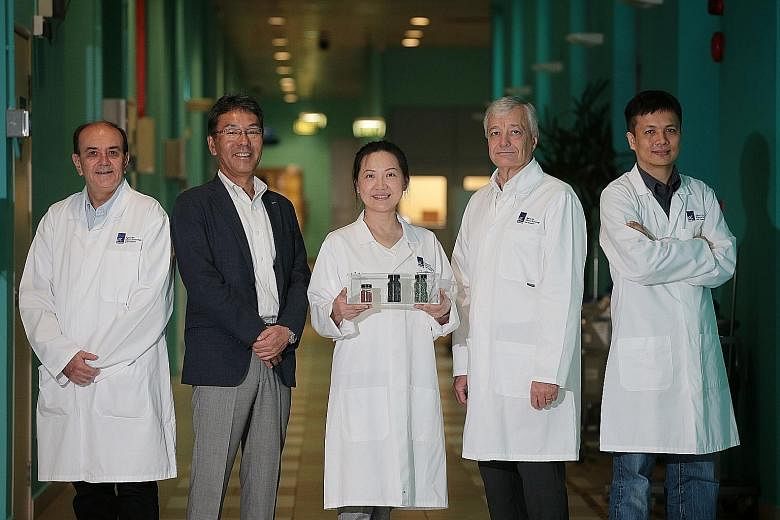A new system to help factories convert the carbon dioxide they produce into methane - reducing their carbon footprint - is expected to hit the market as early as next year.
Created by Japanese heavy machinery maker IHI Corporation and Singapore's Agency for Science, Technology and Research (A*Star), it uses a nickel-based catalyst that can last twice as long as some solutions on the market - saving companies time needed to regularly replace this substance.
The methane produced, from carbon dioxide and renewable hydrogen, can then be sold for profit or used as an energy source to power a factory's operations, and A*Star is launching a demonstration unit of the system with IHI today at its Institute of Chemical and Engineering Sciences (ICES) on Jurong Island.
"We use nickel as a core and have porous silica around it," ICES senior scientist Chen Luwei told The Straits Times ahead of the launch, likening the catalyst's structure to a muffin with raisins inside.
The structure, which separates the nickel particles and physically prevents them from moving, also provides stability against "sintering" - when particles compact and form a solid mass, she added.
"The conventional technique doesn't use this sort of core-shell structure," said Dr Chen, who noted that such catalysts tend to become larger over time as particles cluster together, losing the active sites used in the process of converting carbon dioxide to methane.
While the technique for a core-shell catalyst can be complicated to scale, A*Star and IHI have come up with a method to do so, she said.
On the advantages of the new system, which cost under $10 million to develop, ICES principal scientist Armando Borgna said: "If your catalyst is not stable, you need to stop your reactor, regenerate your catalyst and restart it. All these things will affect your productivity."
Replacing a tonne of catalyst in a large reactor, for instance, could mean stopping operations for several weeks to a month, he added, noting that a better catalyst can help.
The plan is to offer the new system to factories on Jurong Island, said Mr Tomoyuki Kuwata, chief executive of IHI Asia Pacific.
He added that IHI is already in talks with four to five Singapore companies, as well as Japanese ones, about the system.
While the production of methane from carbon dioxide taps existing technology that just needs to be optimised, Mr Kuwata added that IHI and A*Star do not plan to stop there.
They are working to develop more challenging technology in five years, to produce olefins - the raw material for plastics - from carbon dioxide. This would allow the recycling of waste products to make plastics in the future, instead of using oil to produce new chemicals.
Among the reasons for IHI's focus on the decarbonisation of supply chains is a change in market sentiment over the past two years, as countries look to meet emissions targets under global agreements.
Singapore introduced a carbon tax scheme this year to reduce emissions of greenhouse gases, helping it to meet climate targets under the 2015 Paris Agreement.
All facilities in Singapore producing 25,000 tonnes or more in greenhouse gas emissions in a year will have to pay an initial tax of $5 a tonne of such emissions from 2019 to 2023. This rate will be reviewed by 2023, and there are plans to increase it to between $10 and $15 a tonne of emissions by 2030.
Globally, carbon dioxide emissions hit an all-time high of 37.1 billion tonnes last year.


